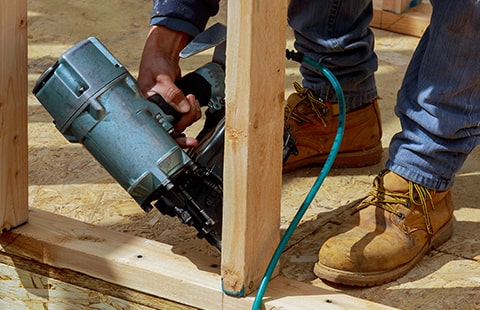Get unique, complex parts easily. No matter your requirements, Chaoyi Spring creates hard-to-produce coil springs and wire forms.
Let us help you create the custom wire form you need, from S-hooks and J-hooks to utility hooks and more.
We work closely with customers across a wide range of industries, helping them design and manufacture made-to-order parts.
Why choose Chaoyi Spring? We prioritize customer-focused collaboration, modern equipment and the latest technology to make your parts per print.
Find the information and guidance you need, from measuring a spring to learning about materials, placing an order and much more.
Your garage door, a silent guardian of your valuable possessions, relies on a crucial component: torsion springs. These unsung heroes are responsible for the smooth, effortless operation of your door,


Your garage door, a silent guardian of your valuable possessions, relies on a crucial component: torsion springs. These unsung heroes are responsible for the smooth, effortless operation of your door, allowing you to open and close it with ease. But understanding the intricacies of these springs is vital for ensuring their longevity and maintaining the safe functionality of your garage door. This article delves into the world of garage door torsion springs, covering their role, types, and crucial aspects like safety and replacement.

Garage door torsion springs are coiled metal springs mounted above the door, typically on a shaft. These springs store potential energy, which is released when you open the door. This stored energy counterbalances the weight of the door, making it feel lighter to lift and lowering the risk of injury. Without these springs, your garage door would be incredibly difficult to open and close, especially if you have a heavier, insulated door.
Garage door torsion springs are typically classified based on the material and design:
Additionally, you'll often encounter torsion springs with different winding directions:
Knowing the winding direction is essential for correct installation and replacement.
Garage door torsion springs are under extreme tension and can be very dangerous if handled improperly. Always prioritize safety by:
It's best to leave these tasks to a qualified garage door technician.
Time takes its toll on even the toughest torsion springs. Recognizing the signs of a failing spring can prevent accidents and ensure the smooth operation of your garage door. Here are some warning signals to watch for:
If you notice any of these signs, it's imperative to call a professional garage door technician for inspection and repair.
Replacing garage door torsion springs is not a DIY task. It requires specialized tools, expertise, and knowledge of the correct spring specifications to ensure safety and proper operation. Here's why it's best to call a professional:
By entrusting the job to a qualified technician, you're ensuring your garage door operates safely and reliably.
Although you shouldn't attempt repairs yourself, you can extend the lifespan of your springs and prevent premature failure with regular maintenance:
These simple maintenance tasks can go a long way in ensuring the safety and longevity of your garage door torsion springs.
Your garage door torsion springs are often overlooked, but they play a critical role in the smooth and safe operation of your door. Understanding their function, recognizing signs of wear, and prioritizing safety are crucial for maintaining your garage door's reliability. Remember, it's best to leave repairs and replacements to qualified professionals, who have the expertise and safety protocols to handle these powerful components.
By understanding the fundamentals of your garage door torsion springs, you can make informed decisions regarding their maintenance and replacement. This knowledge can help you avoid potential safety hazards and ensure the smooth and efficient operation of your garage door for years to come.
Browse some of the custom wire forms and springs that we manufacture. Don’t see what you need? We specialize in made-to-order products that meet your application requirements.
Visit Our GalleryNeed a custom wire form or coil spring? We make it work. Fill out the contact form and a representative will respond within 1 business day. If you have a PDF or CAD file, you can submit to request a quote.